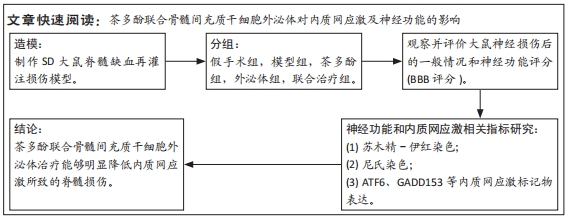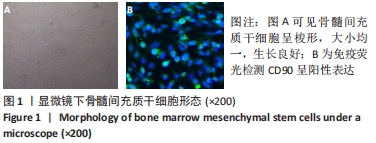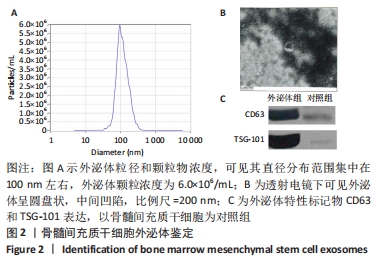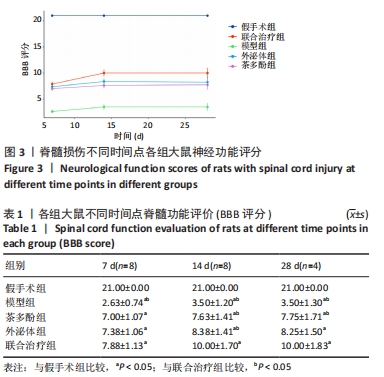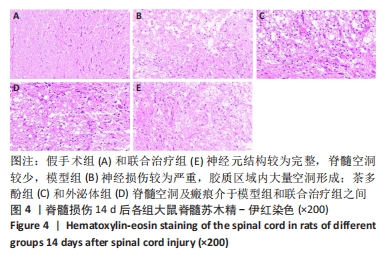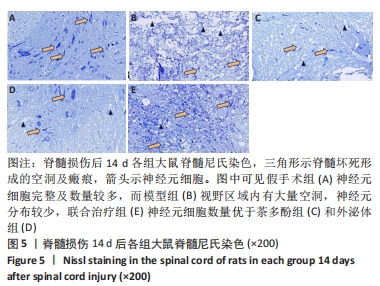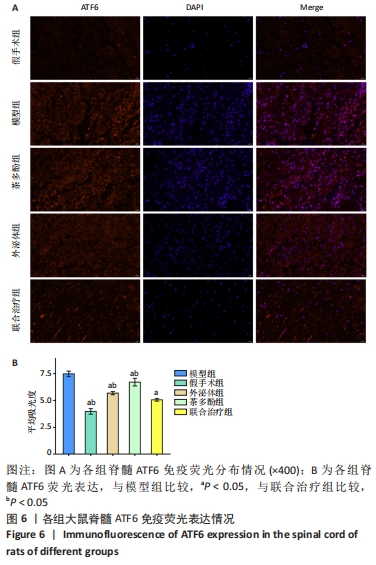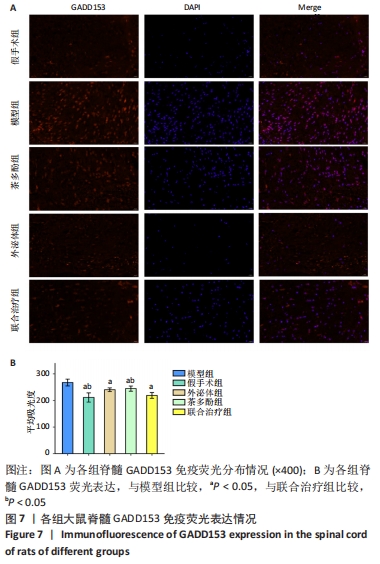[1] LIU WZ, MA ZJ, LI JR, et al. Mesenchymal stem cell-derived exosomes: therapeutic opportunities and challenges for spinal cord injury. Stem Cell Res Ther. 2021;12(1):102.
[2] 陈平波,王晶,孙勇,等.京尼平交联音猬因子复合纤维蛋白支架修复大鼠脊髓损伤[J].中国组织工程研究,2022,26(21):3345-3350.
[3] 龙智生,马泽民,吕国华,等.大鼠急性脊髓损伤后内质网应激相关蛋白CHOP的表达及其意义[J].中国脊柱脊髓杂志,2009,19(6): 458-463.
[4] YAO M, PU PM, LI ZY, et al. Melatonin restores endoplasmic reticulum homeostasis to protect injured neurons in a rat model of chronic cervical cord compression. J Pineal Res. 2023;74(4):e12859.
[5] 韩晓光,田伟,刘波,等.表没食子儿茶素没食子酸酯对大鼠脊髓损伤后神经功能恢复的影响[J].中国脊柱脊髓杂志,2013,23(11): 998-1005.
[6] ZHOU Y, WEN LL, LI YF, et al. Exosomes derived from bone marrow mesenchymal stem cells protect the injured spinal cord by inhibiting pericyte pyroptosis. Neural Regen Res. 2022;17(1):194-202.
[7] 谢兴奇,胡伟,屠冠军.骨髓间充质干细胞来源外泌体与硫酸软骨素酶ABC联合治疗大鼠脊髓损伤[J].中国组织工程研究,2022, 26(1):20-26.
[8] WEI X, ZHOU Z, LI L, et al. Intrathecal Injection of 3-Methyladenine Reduces Neuronal Damage and Promotes Functional Recovery via Autophagy Attenuation after Spinal Cord Ischemia/Reperfusion Injury in Rats. Biol Pharm Bull. 2016;39(5):665-673.
[9] SUNG SE, SEO MS, KIM YI, et al. Human Epidural AD-MSC Exosomes Improve Function Recovery after Spinal Cord Injury in Rats. Biomedicines. 2022;10(3):678.
[10] KANCHANAPALLY R, DESHMUKH SK, CHAVVA SR, et al. Drug-loaded exosomal preparations from different cell types exhibit distinctive loading capability, yield, and antitumor efficacies: a comparative analysis. Int J Nanomedicine. 2019;14:531-541.
[11] REN Z, QI Y, SUN S, et al. Mesenchymal Stem Cell-Derived Exosomes: Hope for Spinal Cord Injury Repair. Stem Cells Dev. 2020;29(23):1467-1478.
[12] CAMBRIA RP, DAVISON JK, ZANNETTI S, et al. Clinical experience with epidural cooling for spinal cord protection during thoracic and thoracoabdominal aneurysm repair. J Vasc Surg. 1997;25(2):234-241.
[13] LI GL, FAROOQUE M, OLSSON Y. Changes of Fas and Fas ligand immunoreactivity after compression trauma to rat spinal cord. Acta Neuropathol. 2000;100(1):75-81.
[14] XU D, CUI S, SUN Y, et al. Overexpression of glucose-regulated protein 94 after spinal cord injury in rats. J Neurol Sci. 2011;309(1-2):141-147.
[15] YONG C, ARNOLD PM, ZOUBINE MN, et al. Apoptosis in cellular compartments of rat spinal cord after severe contusion injury. J Neurotrauma. 1998;15(7):459-472.
[16] PAHL HL. Signal transduction from the endoplasmic reticulum to the cell nucleus. Physiol Rev. 1999;79(3):683-701.
[17] IIDA K, LI Y, MCGRATH BC, et al. PERK eIF2 alpha kinase is required to regulate the viability of the exocrine pancreas in mice. BMC Cell Biol. 2007;8:38.
[18] BO N, YILIN H, CHAOYUE Y, et al. Acrylamide induces NLRP3 inflammasome activation via oxidative stress- and endoplasmic reticulum stress-mediated MAPK pathway in HepG2 cells. Food Chem Toxicol. 2020;145:111679.
[19] GUO Y, LU Y, WANG J, et al. Dysregulated ion channels and transporters activate endoplasmic reticulum stress in rat kidney of fetal growth restriction. Life Sci. 2020;259:118276.
[20] LI Y, YI M, WANG D, et al. LncRNA KCNQ1OT1 Regulates Endoplasmic Reticulum Stress to Affect Cerebral Ischemia-Reperfusion Injury Through Targeting miR-30b/GRP78. Inflammation. 2020;43(6):2264-2275.
[21] 龙智生,马泽民,邓幼文,等.甲泼尼龙对大鼠急性脊髓损伤后内质网应激相关蛋白CHOP表达的影响[J].南昌大学学报(医学版), 2013,53(1):16-20.
[22] ZHANG L, YAN R, WU Z. Metagenomics analysis of intestinal flora modulatory effect of green tea polyphenols by a circadian rhythm dysfunction mouse model. J Food Biochem. 2020 Aug 10:e13430. doi: 10.1111/jfbc.13430.
[23] AHADI S, ZARGARI M, KHALATBARY AR. Assessment of the neuroprotective effects of (-)-epigallocatechin-3-gallate on spinal cord ischemia-reperfusion injury in rats. J Spinal Cord Med. 2021;44(5): 725-732.
[24] ZHANG S, CAO M, FANG F. The Role of Epigallocatechin-3-Gallate in Autophagy and Endoplasmic Reticulum Stress (ERS)-Induced Apoptosis of Human Diseases. Med Sci Monit. 2020;26:e924558.
[25] TIAN W, HAN XG, LIU YJ, et al. Intrathecal epigallocatechin gallate treatment improves functional recovery after spinal cord injury by upregulating the expression of BDNF and GDNF. Neurochem Res. 2013;38(4):772-729.
[26] RENNO WM, BENOV L, KHAN KM. Possible role of antioxidative capacity of (-)-epigallocatechin-3-gallate treatment in morphological and neurobehavioral recovery after sciatic nerve crush injury. J Neurosurg Spine. 2017;27(5):593-613.
[27] STEINMANN J, BUER J, PIETSCHMANN T, et al. Anti-infective properties of epigallocatechin-3-gallate (EGCG), a component of green tea. Br J Pharmacol. 2013;168(5):1059-1073.
[28] LI L, ZHANG Y, MU J, et al. Transplantation of Human Mesenchymal Stem-Cell-Derived Exosomes Immobilized in an Adhesive Hydrogel for Effective Treatment of Spinal Cord Injury. Nano Lett. 2020;20(6): 4298-4305.
[29] TRAN PHL, XIANG D, TRAN TTD, et al. Exosomes and Nanoengineering: A Match Made for Precision Therapeutics. Adv Mater. 2020;32(18): e1904040.
[30] HAZRATI A, MALEKPOUR K, SOUDI S, et al. Mesenchymal stromal/stem cells spheroid culture effect on the therapeutic efficacy of these cells and their exosomes: A new strategy to overcome cell therapy limitations. Biomed Pharmacother. 2022;152:113211.
[31] YU W, LI S, GUAN X, et al. Higher yield and enhanced therapeutic effects of exosomes derived from MSCs in hydrogel-assisted 3D culture system for bone regeneration. Biomater Adv. 2022;133:112646.
[32] FAN L, LIU C, CHEN X, et al. Exosomes-Loaded Electroconductive Hydrogel Synergistically Promotes Tissue Repair after Spinal Cord Injury via Immunoregulation and Enhancement of Myelinated Axon Growth. Adv Sci (Weinh). 2022;9(13):e2105586.
[33] RAN N, LI W, ZHANG R, et al. Autologous exosome facilitates load and target delivery of bioactive peptides to repair spinal cord injury. Bioact Mater. 2022;25:766-782.
|
